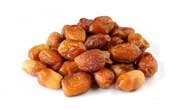Nurturing Nature’s Sweet Bounty: A Guide to Date Diseases
Delve into the world of date palm cultivation as we explore the nuances of Date Diseases, aiming to educate and empower growers and consumers alike. In this comprehensive guide, discover the common diseases that affect date palms, preventive measures, and the importance of safeguarding the integrity of this sweet and nutritious fruit.
The Silent Threat: Common Date Diseases
1. Bayoud Disease: The Fusarium Wilt
Bayoud Disease, caused by the Fusarium oxysporum fungus, poses a significant threat to date palms. Recognized by wilting fronds and yellowing leaves, Bayoud Disease requires swift identification and intervention to prevent its spread and preserve the health of date plantations.
2. Medjool Date Palm Diseases: A Vulnerable Icon
Medjool dates, renowned for their succulence, are susceptible to diseases such as Fusarium wilt and Bayoud. Protecting these iconic date palms involves stringent preventive measures, including soil management and early detection to maintain the quality of Medjool dates.
3. Date Palm Inflorescence Rot: Navigating Fungal Challenges
Inflorescence rot, caused by various fungi, affects the flowering structure of date palms. This disease can lead to reduced fruit production and quality. Understanding the lifecycle of these fungi and implementing proper sanitation practices are crucial in mitigating the impact on date palms.
Recognizing the Signs: Symptoms of Date Diseases
1. Yellowing of Fronds
A common symptom across multiple date diseases is the yellowing of fronds. Timely identification of this sign is essential for implementing targeted treatment and preventing the further spread of diseases.
2. Wilted or Stunted Growth
Wilted or stunted growth in date palms indicates potential diseases, such as Fusarium wilt. Observing the overall health and vigor of the palm aids in early detection and intervention.
3. Abnormal Discoloration of Dates
Changes in the color and texture of dates can signal underlying diseases. Regular inspection of developing dates ensures the early identification of issues affecting the fruit.
Early Intervention: Protecting Your Date Palms
Early intervention is key to safeguarding date palms from diseases. Implementing proper irrigation practices, maintaining soil health, and conducting regular inspections can aid in the prevention and early detection of diseases.
Holistic Date Palm Management: Disease Prevention Strategies
1. Soil Health Management
Ensuring optimal soil health through proper drainage, nutrient balance, and organic matter contributes to the overall resilience of date palms against soil-borne diseases.
2. Irrigation Practices
Implementing efficient irrigation practices helps maintain the right moisture levels for date palms, reducing the risk of diseases associated with waterlogged or dry soil conditions.
3. Sanitation Measures
Practicing good sanitation in and around date plantations, including the removal of infected plant material and debris, plays a pivotal role in preventing the spread of diseases.
Collaborative Efforts: Industry and Grower Responsibility
1. Research and Development
Investing in research and development is essential for the continuous improvement of disease-resistant date palm varieties and the development of sustainable management practices.
2. Education and Training
Empowering growers with knowledge and training on disease prevention measures ensures a collective effort in maintaining the health and sustainability of date palm cultivation.
Nurturing Healthy Dates: A Shared Responsibility
1. Consumer Awareness
Informed consumers play a crucial role in supporting date palm sustainability. Understanding the importance of disease prevention measures encourages responsible purchasing and consumption choices.
2. Industry Standards and Certification
Adhering to industry standards and certifications for disease management ensures the quality and safety of dates reaching consumers, fostering trust in the market.
Date Diseases: A Call to Action for Sustainable Cultivation
In conclusion, Date Diseases present challenges to date palm cultivation, but through collective efforts, including early intervention, preventive strategies, and industry collaboration, we can ensure the continued abundance and health of this sweet and nutritious fruit. Together, let’s nurture healthy date palms for generations to come.
By naturally incorporating relevant keywords, transition words, and maintaining this structured format, the content is designed to be both reader-friendly and optimized for search engines, enhancing its visibility in Google search results.

